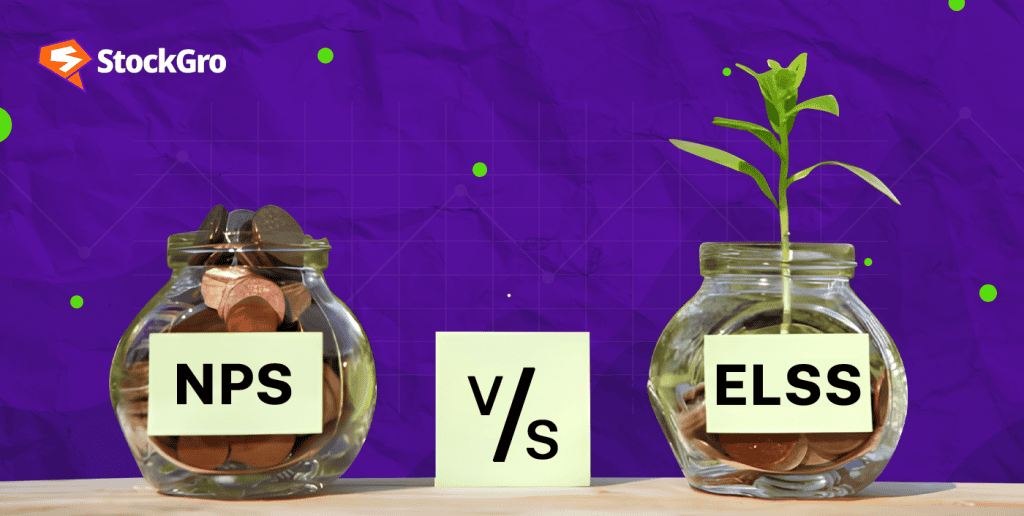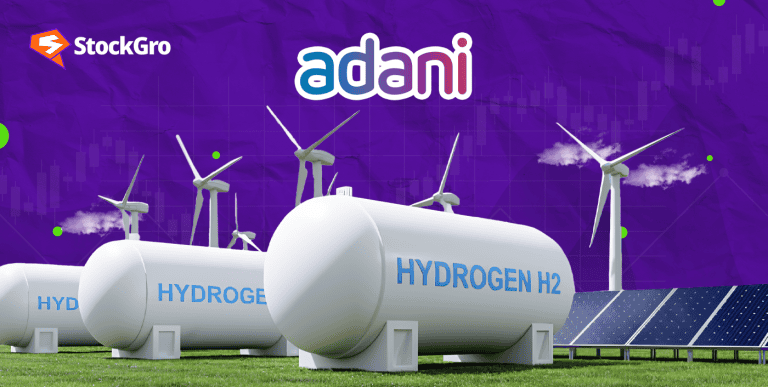
Introduction
Investments that reduce taxes and generate wealth are essential for financial planning. India’s NPS and ELSS are one of these options. Both offer wealth generation and have tax advantages under Section 80C of the Income Tax Act, but their investment horizon, risk profile, and structure differ.
This critical comparison of NPS vs. ELSS will help you choose the finest financial strategy. Know the difference between NPS and ELSS to maximise tax savings and earnings.
What is NPS?
NPS is a government-sponsored voluntary retirement savings program. It encourages lifelong contributions to improve financial security.
A wide portfolio of government assets, equities, and bonds helps NPS subscribers save for retirement. This strategy makes NPS an excellent choice for prudent investors seeking moderate, consistent growth. It provides a long-term solution for retirement planning and income, addressing the challenge of ensuring that all residents have an adequate retirement income.
Eligibility criteria and structure
All Indians 18–70 can join NPS. Tier 1 (limited withdrawal, compulsory, retirement-oriented) and Tier 2 (flexible withdrawal, voluntary) accounts comprise the program.
| Account type | Minimum contribution | Withdrawal |
| Tier 1 | ₹500 | Restricted until 60, partial withdrawals allowed after 10 years |
| Tier 2 | ₹1000 | Able to withdraw anytime. |
NPS payments are tax-deductible under Section 80C (up to ₹1.5 lakh) and another ₹50,000 under Section 80CCD(1B), making it tax-efficient.
Once a year, subscribers can switch investment allocations and fund managers to control risk-return.
NPS is a low-cost, long-term solution for retirement planning because it delivers pension and tax benefits.
Explore more on: Tax-efficient withdrawal strategies for retirement in India
What is ELSS?
ELSS mutual funds invest mostly in equities and equity-related securities. ELSS is a high-risk, high-reward investment. ELSS can create wealth and save taxes under section 8OC of the Income Tax Act of 1961. Investing in ELSS provides annual tax deductions of up to ₹1.5 lakh.
The 3 year lock-in period makes ELSS a flexible tax-saving strategy for medium-term financial goals. The returns are market-linked, and while equity exposure provides more growth potential, it also increases market risk. Thus, risk-tolerant investors prefer ELSS over NPS, which is more careful and diverse.
ELSS is a better alternative for equity investors seeking tax benefits and higher returns.
| Feature | Details |
| Minimum lock-in | 3 years |
| Tax deduction | Up to ₹1.5 lakhs under Section 80C |
| Risk profile | High (Equity-based) |
| Potential returns | High (subject to market fluctuation) |
It is the potential for considerable long-term growth that distinguishes ELSS from NPS, and its higher risk and reward potential make it an appealing option for those who are willing to accept short-term market volatility.
Nevertheless, investors must assess the risk tolerance before selecting ELSS over more diversified, secure schemes such as NPS.
Learn more about: ELSS Mutual Funds
NPS vs ELSS
| Criteria | NPS | ELSS |
| Asset allocation | Mixed portfolio: equity (up to 75%), government bonds, and corporate bonds | 100% equity-based, fully exposed to market volatility. |
| Returns | Asset allocation and fund performance typically determine the percentage, which ranges from 8-10% | Over the long run, the ELSS fund’s benchmark has offered around 15%; however, it is contingent upon market conditions. |
| Risk Profile | Diversification across asset classes mitigates risk. | High risk is a result of market dependence and complete equity exposure. |
| Lock-in period | Contributions are secured until retirement (60 years of age), with partial withdrawals permitted after 10 years. | 3-year lock-in period; however, complete market exposure is maintained even after the lock-in period concludes. |
| Suitability | Ideal for conservative, long-term investors seeking stable returns and reduced risk | Suitable for high-risk, aggressive investors seeking bigger profits in a volatile market. |
| Tax | Section 80C and 80CCD(1B) can be combined to provide up to ₹2 lakh. | Section 80C allows deductions up to ₹1.5 lakh. |
- NPS helps low-risk investors diversify for long-term stability and moderate returns.
- ELSS offers higher returns, but it’s appropriate for risk-tolerant individuals who can handle market volatility. Investors should weigh their financial goals and risk tolerance while choosing NPS or ELSS.
Liquidity and withdrawal flexibility
To ensure long-term investments, NPS imposes strict withdrawal regulations. Pre-60 withdrawals are limited to partial amounts for medical expenditures, education, and property acquisition. The maximum withdrawal is 25% of contributions, three times each term. Positioning NPS as a retirement plan limits liquidity for investors with short-term needs.
In contrast, ELSS allows for greater flexibility. Despite the necessary 3-year lock-in period, ELSS allows investors to withdraw their cash at any time following the lock-in period, making it more liquid than NPS for medium-term aims.
When it comes to liquidity and withdrawal flexibility, NPS and ELSS serve quite different investors. The NPS’s long-term lock-in until retirement is meant to encourage conservative retirement investments. The restricted withdrawal policy, which enables only partial access (up to 25% for particular reasons), makes it unsuitable for individuals seeking short-term flexibility and decreases liquidity.
This system ensures that retirement savings are safeguarded, making NPS the best option for risk-averse, long-term investors worried about assuring post-retirement income.
ELSS offers extra liquidity after the three-year lock-in. The ability to withdraw the entire amount gives investors more flexibility in reaching their short- to medium-term financial goals. ELSS appeals to risk-averse investors seeking tax benefits and higher profits from equity investment. ELSS risk increases with market volatility.
Finally, your financial goals will determine whether you choose NPS or ELSS. NPS is appropriate for conservative, retirement-oriented investors, whereas ELSS is appropriate for individuals seeking larger returns and the ability to withdraw funds after a short investment period.
Investment tenure and goals
The investment purpose and duration distinguish NPS from ELSS. NPS only offers long-term retirement savings till 60. Due to its disciplined savings and targeted withdrawals, it is the best option for post-retiree financial security.
However, ELSS is good for short- to medium-term goals and has a three-year lock-in. Due to its flexibility and liquidity after the lock-in, ELSS may appeal to capital growth and faster returns investors. Nonetheless, its market-linked nature poses a higher risk than NPS’s diversified approach.
Conservative, long-term savers can retire safely with NPS. ELSS is better for short- to medium-term financial goals for risk-takers who desire growth. The choice depends on risk tolerance and investment horizon.
Charge and costs
NPS is well-known for its low-cost structure. One of the most cost-effective long-term investing solutions, it lets you grow more money without fees. The Pension Fund Regulatory and Development Authority (PFRDA) regulates these fees for fund managers’ consistency and transparency.
SEBI monitors ELSS funds’ asset-based expense ratios. For active equity funds, including ELSS, the maximum expense ratio is 2.25% for the first ₹500 crore of assets under management, as per the Association of Mutual Funds in India (AMFI). The rate reduces as AUM grows, with restrictions specified for different sectors of AUM. For AUMs beyond ₹50,000 crore, the rate drops to 1.05%.
Owing to the lower expenses of NPS, compounding has the potential to significantly enhance returns over time. In contrast, ELSS’s elevated expenditure ratio has the potential to erode earnings, especially if market performance fails to justify active management costs. When deciding between NPS and ELSS, investors must weigh the possibility of higher returns against the trade-off of cost efficiency.
Who is NPS or ELSS best suited for?
Long-term, retirement-oriented investors who value disciplined saving and stability are ideal for NPS. NPS offers modest returns with low risk from government securities, bonds, and stocks. For efficient retirement planning and tax savings, Sections 80C and 80CCD(1B) appeal. However, limited liquidity—withdrawals are frequently prohibited until retirement—makes it unsuitable for persons who need rapid asset access.
Instead, risk-averse and market-savvy investors wanting higher returns should consider ELSS. ELSS’s full equity exposure and better risk/reward profile make it a promising short- to medium-term growth vehicle. For growth-oriented investors with higher risk tolerances, the 3-year lock-in term offers some liquidity flexibility afterwards.
NPS or ELSS relies on your priorities: long-term security or short-term growth.
Know more about: Investing in hybrid funds in 2023: A simple and comprehensive explanation
Conclusion
In summary, NPS is the best option for long-term, retirement-oriented investors who value consistency. Its diverse portfolio and low-cost structure generate moderate returns and tax advantages. However, market-savvy, risk-tolerant investors seeking higher returns through equity exposure and shorter lock-in periods could consider ELSS. The main differences are risk, liquidity, and investing goals.
Your financial goals, risk tolerance, and timeframe should determine your NPS or ELSS option. NPS is a great retirement plan solution for those concerned about stability. Nonetheless, ELSS is better suited for individuals seeking faster development at a larger risk.
FAQs
- Which is better, NPS or ELSS?
The decision between NPS and ELSS is contingent upon your risk tolerance and financial objectives. Long-term, responsible investors seeking moderate returns and tax benefits for retirement savings can consider NPS. ELSS is best for risk-averse investors seeking higher returns through equity exposure and a shorter lock-in period. NPS offers stability and minimal risk, whereas ELSS provides growth but is characterised by increased market volatility. Your decision should be consistent with your risk appetite and investment horizon.
- Can I invest 1.5 lakhs in ELSS and 50k in NPS?
You can allocate ₹1.5 lakh to ELSS under Section 80C and ₹50,000 to NPS under Section 80CCD(1B). You can deduct ₹2 lahks if you invest in both alternatives and tax deductions are allowed. This approach optimises both tax savings and growth potential by integrating the advantages of market-linked returns from ELSS with the stability and long-term retirement focus of NPS.
- Which is better NPS or mutual fund?
The decision between mutual funds and NPS is contingent upon your objectives. A retirement-centric scheme, NPS provides long-term stability with moderate returns using a diversified portfolio. It suits responsible investors who value tax savings and retirement preparation. Mutual funds’ equity, debt, and hybrid options suit varied risk tolerances and goals, making them more adaptable. Mutual funds—especially ELSS—may be better for short- to medium-term growth or aggressive investments due to their liquidity and return potential.
- Which is better NSC or ELSS?
The government-backed NSC has a stable return and low risk. It suits cautious investors seeking market-risk-free profits. The market-linked ELSS investment has higher risks and returns. ELSS’s three-year lock-in and Section 80C tax benefits contrast with NSC’s five. ELSS is superior for asset generation and higher returns, while NSC is more appropriate for safety and guaranteed returns.
- What are the disadvantages of ELSS?
ELSS’s substantial equity exposure raises market-linked risk and short-term volatility. ELSS does not guarantee performance despite the possibility of higher returns. The mandated three-year lock-in term limits liquidity and prevents fund access before then. ELSS may have lower returns due to capital gains tax above the tax exemption level. Before selecting an ELSS, investors must evaluate their risk tolerance.

